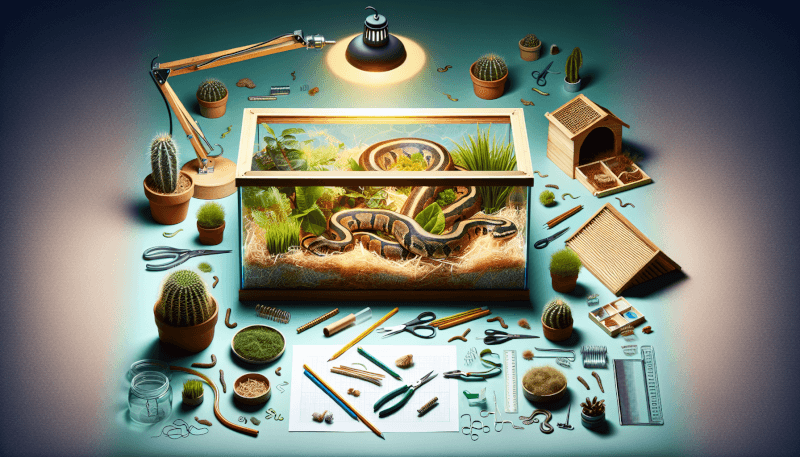Are you a proud owner of a pet snake or considering bringing one into your home? It’s crucial to understand that pet snakes require a safe environment with specific habitat requirements to ensure their well-being. From temperature and humidity control to providing proper hiding spots and appropriate substrate, this article will guide you through the essential steps of creating a snake-friendly habitat. With the right knowledge and preparation, you can guarantee a safe and comfortable home for your scaly friend.
Choosing the Right Enclosure
When it comes to choosing the right enclosure for your pet snake, there are a few key factors to consider. The first is determining the appropriate size for your snake’s needs. Snakes need enough space to move around comfortably, but not an enclosure that is too large, which could make them feel insecure. Research the adult size of your specific snake species and choose an enclosure that provides ample room for growth.
The next consideration is the optimal enclosure type for your snake. There are various options available, such as glass terrariums, plastic tubs, or custom-built wooden enclosures. Each has its own advantages and disadvantages, so it’s important to weigh factors such as durability, cost, and ventilation before making a decision.
Lastly, you’ll need to choose the right substrate for your snake’s enclosure. Substrate refers to the material that lines the bottom of the enclosure. Popular options include aspen bedding, coconut fiber, or reptile carpet. Consider the ease of cleaning, moisture retention, and natural appearance when selecting the substrate that best suits your snake’s needs.
Providing Proper Temperature
Temperature is a crucial aspect of a snake’s habitat. Reptiles are ectothermic, which means they rely on external sources of heat to regulate their body temperature. To ensure that your snake stays healthy and comfortable, it’s essential to provide the proper temperature gradient within the enclosure.
One way to achieve this is by utilizing heating elements. Options include heat mats, heat bulbs, or ceramic heat emitters. Place the heating element on one side of the enclosure to create a warm basking spot, while leaving the other side cooler for your snake to regulate its body temperature.
To accurately monitor the temperature, use thermometers and thermostats. This allows you to keep track of the temperature fluctuations and adjust the heating elements accordingly. Make sure to regularly check and adjust the settings to maintain a consistent and suitable temperature range for your snake.
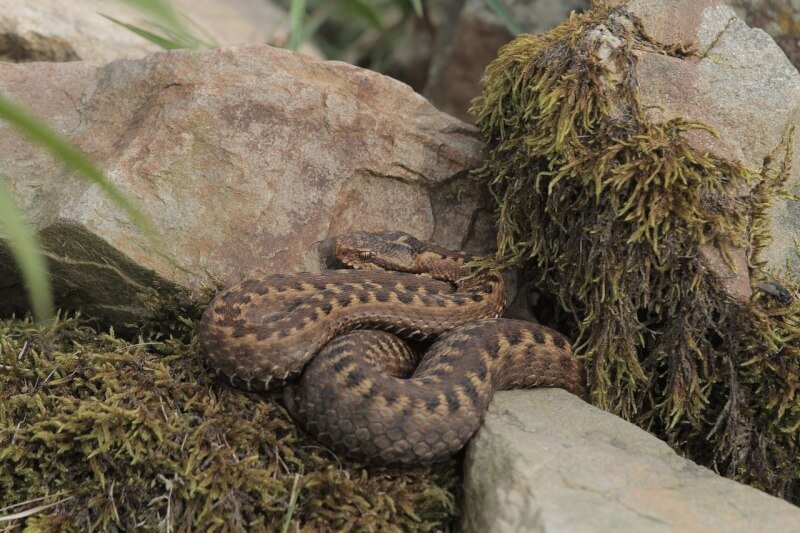
Maintaining Humidity Levels
Humidity is another vital factor in creating a suitable habitat for your snake. In their natural habitats, snakes are often found in environments with specific humidity levels. It’s crucial to understand the importance of humidity and implement strategies to maintain the proper levels within the enclosure.
To increase humidity, you can introduce a humidity source such as a large water bowl or a humid hide. The water bowl should be spacious enough for your snake to soak in if desired, while the humid hide can be filled with moistened substrate, providing a microclimate with higher humidity.
Monitoring and adjusting humidity levels is crucial to ensure your snake’s well-being. Using a hygrometer allows you to measure the humidity accurately. If the humidity is too low, you can add more moisture to the enclosure by misting the substrate or increasing the size of the water bowl. Conversely, if the humidity is too high, you can improve airflow by slightly reducing the amount of moist substrate or increasing ventilation.
Offering Adequate Lighting
While snakes are not typically considered diurnal animals, they still require a proper light cycle to establish a healthy circadian rhythm. Lighting also helps simulate the natural day and night patterns found in their native habitats. When creating a lighting setup for your snake’s enclosure, consider these key factors.
Distinguish between day and night lighting. During the day, provide a light source that mimics natural sunlight. This can be achieved using fluorescent bulbs or full spectrum reptile bulbs. Ensure that the light source is not too bright or too close to the enclosure to avoid causing stress to the snake.
Choosing the right light bulbs is essential. Avoid using incandescent bulbs as they emit excess heat and can even burn your snake. Instead, opt for specially designed reptile bulbs that provide the necessary spectrum without producing excessive amounts of heat.
Regulating light cycles helps establish a consistent day and night pattern for your snake. This can be achieved by using timers to automatically turn the lights on and off. Aim for a cycle of 12-14 hours of light followed by 10-12 hours of darkness to mimic natural conditions.
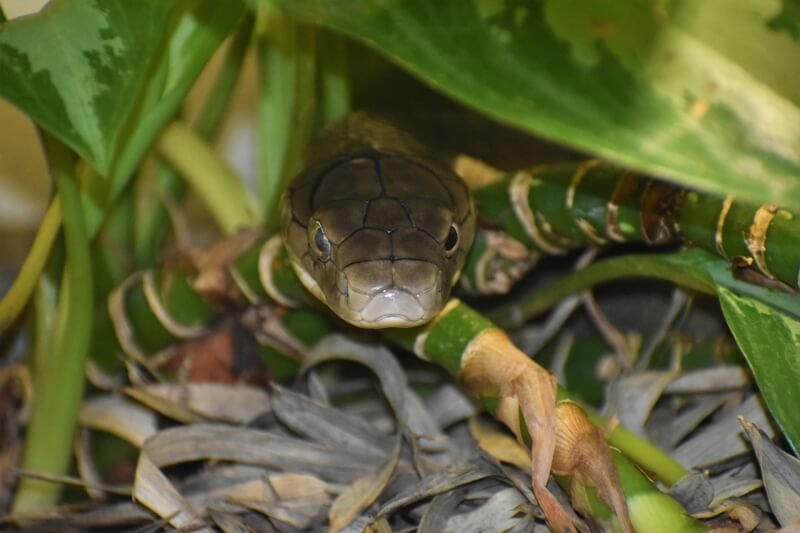
Designing a Suitable Hiding Area
Snakes are naturally shy and reclusive animals, so providing a suitable hiding area is crucial for their well-being. A hiding spot gives them a sense of security and allows them to retreat from potential stressors within their environment. When designing a hiding area, consider the following factors.
Provide multiple hiding spots throughout the enclosure. This allows your snake to choose a hiding spot based on its preference and comfort level. Options for hiding spots can include commercial reptile hides, cork bark tubes, or even upside-down flower pots with entrance holes.
Choose hides of the right size. The hiding spot should be snug enough to make your snake feel secure, but not so cramped that it causes stress or discomfort. Consider the size of your snake and select hides accordingly. It’s also beneficial to have hides of various sizes to cater to your snake’s growth.
Optimal hiding spot placements are essential to ensure your snake has easy access to hiding areas. Place them in multiple locations throughout the enclosure, including both the warmer and cooler sides. This allows your snake to regulate its body temperature while still feeling secure.
Ensuring Proper Ventilation
Proper ventilation is crucial for maintaining a healthy environment within the snake enclosure. It helps remove excess humidity, prevent the growth of mold, and ensure an adequate supply of fresh air. Here are some factors to consider when ensuring proper ventilation.
Creating ventilation openings is a simple way to improve airflow within the enclosure. This can be achieved by using mesh or drilled holes in the enclosure walls. Ensure that the ventilation openings are appropriately sized to prevent the escape of your snake while still allowing for adequate airflow.
Using ventilation equipment such as fans or air vents can enhance the airflow within the enclosure. These can be especially beneficial in larger enclosures or in environments with high humidity levels. Be mindful of the noise generated by such equipment and choose options that are snake-friendly.
Preventing escapes while maintaining ventilation is essential. Check regularly for any gaps or loose fittings in the enclosure that could allow your snake to escape. Ensure that the ventilation openings are securely fastened and monitor the enclosure regularly to ensure your snake remains safely inside.
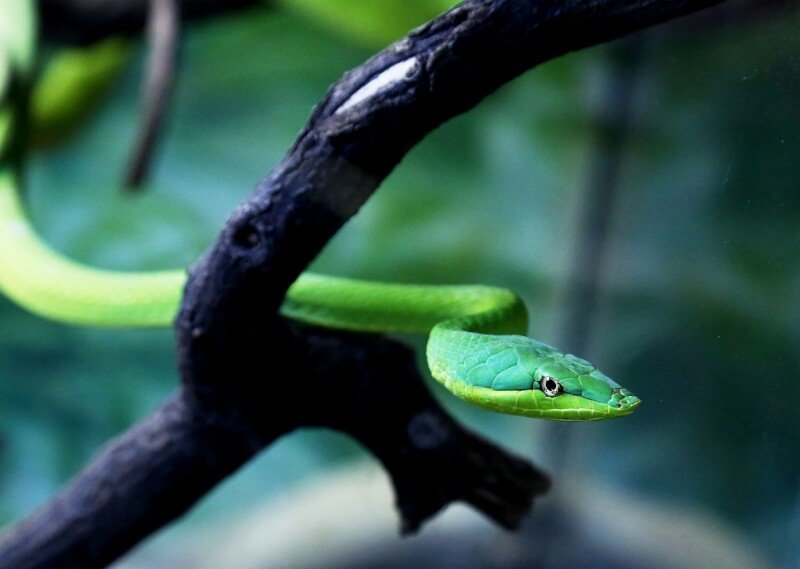
Implementing a Secure Lid or Cover
To provide a safe and secure enclosure for your snake, it’s important to choose an escape-proof lid or cover. Snakes are known for their ability to squeeze through small openings, so it’s crucial to take necessary precautions. Here’s what you need to consider.
Choosing an escape-proof lid or cover is crucial to prevent your snake from escaping its enclosure. Opt for lids that are specifically designed for reptile enclosures, ensuring they have tight-fitting locks or latches. Avoid using loosely fitting lids or covers that can easily be pushed open by a curious snake.
Ensuring proper fit and security is essential to keep your snake safely inside the enclosure. Regularly inspect the lid or cover to make sure it fits snugly and that there are no gaps or openings that the snake could exploit. Replace any damaged or worn-out components to maintain the enclosure’s integrity.
Regularly inspecting and maintaining the lid or cover helps prevent any unforeseen escape attempts. Check for any wear and tear, loose parts, or damage that could compromise the security of the enclosure. By conducting regular checks, you can address any issues promptly and ensure your snake remains safely contained.
Establishing a Feeding Routine
Providing a proper feeding routine is essential for the health and well-being of your pet snake. Snakes have specific dietary requirements, and it’s important to meet these needs to ensure proper growth and development. Here’s what you need to know.
Determining the appropriate food size is crucial to prevent overfeeding or underfeeding your snake. Research the specific dietary needs of your snake species and select appropriately sized prey items. Avoid offering prey that is too large or too small, as it can lead to digestive issues or malnutrition.
Selecting nutritious food options is essential for your snake’s overall health. Feeder rodents, such as mice or rats, are commonly used as prey for many snake species. It’s important to purchase these from reputable sources that supply well-fed and disease-free rodents to ensure your snake receives adequate nutrition.
Feeding techniques and frequency vary depending on the species and size of your snake. The general rule of thumb is to offer pre-killed or thawed frozen prey items. Depending on the age and size of your snake, the feeding frequency can range from once a week to once every few weeks. Research your snake species to determine the appropriate feeding schedule.
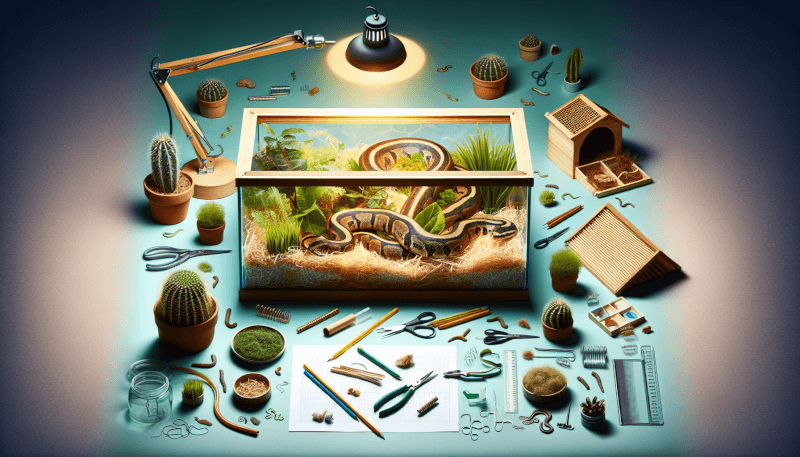
Maintaining Cleanliness
Maintaining a clean environment for your pet snake is crucial for its overall health and well-being. Snakes produce waste, shed their skin, and may leave behind sloughed-off material that needs regular attention. Here’s what you need to do to ensure cleanliness.
Cleaning and disinfecting the enclosure should be done regularly to remove any waste or bacteria buildup. Remove your snake from the enclosure and thoroughly clean all surfaces, including the substrate, hides, and water bowl, using a reptile-safe disinfectant. Allow the enclosure to dry completely before reintroducing your snake.
Removing waste and stale substrate is an important part of maintaining cleanliness. Spot clean the enclosure daily, removing any feces, soiled substrate, or shed skin. Replace the substrate as needed to ensure a clean and hygienic environment for your snake.
Monitoring and preventing the growth of mold or bacteria is crucial for your snake’s health. Maintaining proper humidity levels and providing adequate ventilation can help minimize the risk of mold or bacterial growth. Regularly inspect the enclosure for any signs of mold, fungus, or foul odors, and take appropriate action immediately.
Minimizing Stress and External Disturbances
Minimizing stress and external disturbances is key to providing a peaceful and comfortable environment for your snake. Snakes are sensitive creatures and can be easily stressed by loud noises, vibrations, or harsh lighting. Here’s what you can do to create a calm and quiet environment.
Reducing noise and vibrations in the vicinity of your snake’s enclosure is essential. Avoid placing the enclosure in areas with high foot traffic, near loud appliances, or in close proximity to speakers. Minimizing noise and vibrations helps create a calm environment that promotes your snake’s well-being.
Limiting exposure to harsh light is important for your snake’s comfort. Avoid exposing the enclosure to direct sunlight or overly bright lights that can cause stress or discomfort. Opt for gentle, diffused lighting that closely mimics natural lighting conditions to create a soothing atmosphere.
Maintaining a calm and quiet environment around your snake’s enclosure is crucial. Minimize sudden movements and loud noises when interacting with your snake. Establish a routine and handle your snake gently to minimize stress and help your snake feel secure in its habitat.
By following these guidelines and understanding the specific habitat requirements of your pet snake, you can create a safe and enjoyable environment that promotes their health and well-being. Remember to regularly monitor and adjust the conditions as needed to ensure your snake’s comfort and happiness. Happy snake-keeping!


